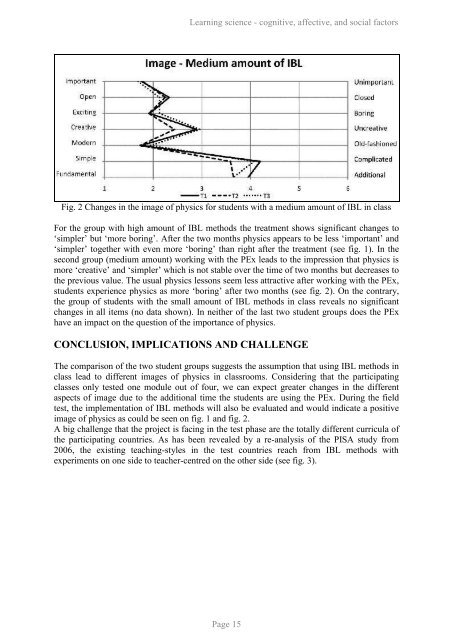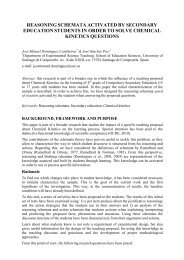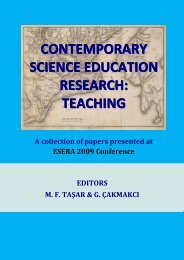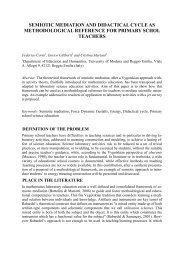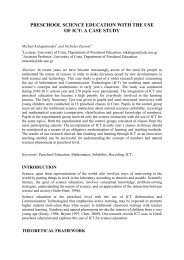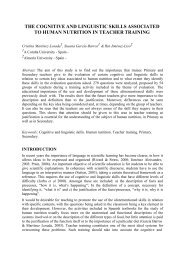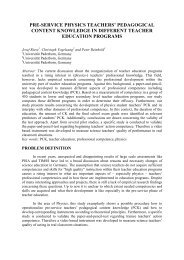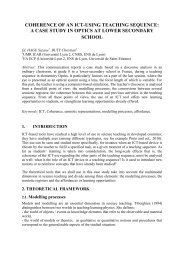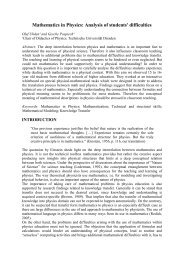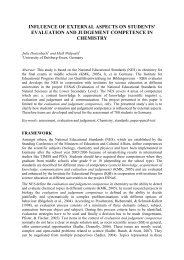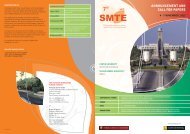Download Esera Ebook Part2
Download Esera Ebook Part2
Download Esera Ebook Part2
Create successful ePaper yourself
Turn your PDF publications into a flip-book with our unique Google optimized e-Paper software.
Learning science - cognitive, affective, and social factors<br />
Fig. 2 Changes in the image of physics for students with a medium amount of IBL in class<br />
For the group with high amount of IBL methods the treatment shows significant changes to<br />
‘simpler’ but ‘more boring’. After the two months physics appears to be less ‘important’ and<br />
‘simpler’ together with even more ‘boring’ than right after the treatment (see fig. 1). In the<br />
second group (medium amount) working with the PEx leads to the impression that physics is<br />
more ‘creative’ and ‘simpler’ which is not stable over the time of two months but decreases to<br />
the previous value. The usual physics lessons seem less attractive after working with the PEx,<br />
students experience physics as more ‘boring’ after two months (see fig. 2). On the contrary,<br />
the group of students with the small amount of IBL methods in class reveals no significant<br />
changes in all items (no data shown). In neither of the last two student groups does the PEx<br />
have an impact on the question of the importance of physics.<br />
CONCLUSION, IMPLICATIONS AND CHALLENGE<br />
The comparison of the two student groups suggests the assumption that using IBL methods in<br />
class lead to different images of physics in classrooms. Considering that the participating<br />
classes only tested one module out of four, we can expect greater changes in the different<br />
aspects of image due to the additional time the students are using the PEx. During the field<br />
test, the implementation of IBL methods will also be evaluated and would indicate a positive<br />
image of physics as could be seen on fig. 1 and fig. 2.<br />
A big challenge that the project is facing in the test phase are the totally different curricula of<br />
the participating countries. As has been revealed by a re-analysis of the PISA study from<br />
2006, the existing teaching-styles in the test countries reach from IBL methods with<br />
experiments on one side to teacher-centred on the other side (see fig. 3).<br />
Page 15


